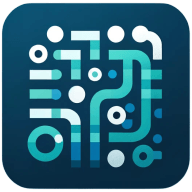Welcome to a deep dive into the evolving world of computer science education. This post will explore the latest trends shaping this dynamic field. From the rise of online learning platforms to the integration of artificial intelligence in the classroom, we'll examine how these developments are transforming the way we learn and teach computer science.
The Rise of Online Learning Platforms
The digital revolution has significantly impacted the way we learn. Online learning platforms have emerged as a dominant trend in computer science education. These platforms offer a variety of courses, from beginner to advanced levels, catering to a diverse range of learners.
Platforms such as Coursera, Udacity, and edX have partnered with top universities and organizations to provide high-quality computer science education. They offer a flexible learning environment, allowing students to learn at their own pace. This flexibility is particularly beneficial for working professionals who wish to upskill or reskill.
Moreover, these platforms have democratized education by making it accessible to anyone with an internet connection. They have broken down geographical barriers, enabling students from remote areas to access world-class education. This trend is expected to continue, with more people turning to online learning platforms for their educational needs.
Integration of Artificial Intelligence in Teaching
Artificial Intelligence (AI) is another trend that is reshaping computer science education. AI-powered tools are being used to enhance teaching and learning experiences.
For instance, AI can provide personalized learning experiences by analyzing a student's learning patterns and tailoring the content accordingly. This personalized approach helps students to learn more effectively and at their own pace.
AI can also automate administrative tasks such as grading and attendance, freeing up time for teachers to focus on instruction. Furthermore, AI can provide instant feedback to students, helping them to improve their understanding and performance.
The use of AI in education is still in its early stages, but its potential is immense. As AI technology continues to evolve, it is expected to play a more significant role in computer science education.
Emphasis on Practical Skills and Hands-on Learning
The traditional lecture-based approach to teaching computer science is giving way to a more practical, hands-on approach. This trend reflects the industry's need for graduates who can apply their knowledge in real-world situations.
Many institutions are now incorporating project-based learning into their curriculum. This method involves students working on real-world projects, allowing them to apply the concepts they have learned.
This hands-on approach not only enhances students' understanding of the subject but also equips them with essential skills such as problem-solving, critical thinking, and teamwork. These skills are highly valued by employers and are crucial for a successful career in computer science.
Growth of Coding Bootcamps
Coding bootcamps have emerged as a popular trend in computer science education. These intensive, short-term training programs are designed to equip students with the necessary coding skills in a short period.
Coding bootcamps offer a practical, project-based learning environment. They focus on teaching the most in-demand programming languages and technologies.
Despite their short duration, bootcamps can be quite rigorous. They require a significant time commitment from students. However, their popularity stems from their ability to provide job-ready skills in a short period.
Increasing Importance of Cybersecurity Education
With the increasing prevalence of cyber threats, cybersecurity education is becoming more critical. Many institutions are now offering specialized courses and degrees in cybersecurity.
These programs aim to equip students with the skills needed to protect digital infrastructure and data. They cover topics such as network security, cryptography, and ethical hacking.
The demand for cybersecurity professionals is expected to grow, making this a promising field for computer science students. As such, the trend towards cybersecurity education is likely to continue.
The Role of Virtual and Augmented Reality in Learning
Virtual Reality (VR) and Augmented Reality (AR) are making their way into computer science classrooms. These technologies offer immersive learning experiences, making complex concepts more accessible.
For instance, VR can simulate real-world environments, allowing students to explore and interact with them. This interactive approach can enhance students' understanding and retention of the subject matter.
While the use of VR and AR in education is still relatively new, it holds great potential. As these technologies become more affordable and accessible, they are likely to play a more significant role in computer science education.
Navigating the Future of Computer Science Education
The landscape of computer science education is evolving rapidly, driven by technological advancements and changing industry needs. By staying abreast of these trends, educators can better prepare their students for the future. Meanwhile, students can make informed decisions about their learning paths. As we continue to navigate this exciting field, one thing is certain: the future of computer science education holds many exciting possibilities.

